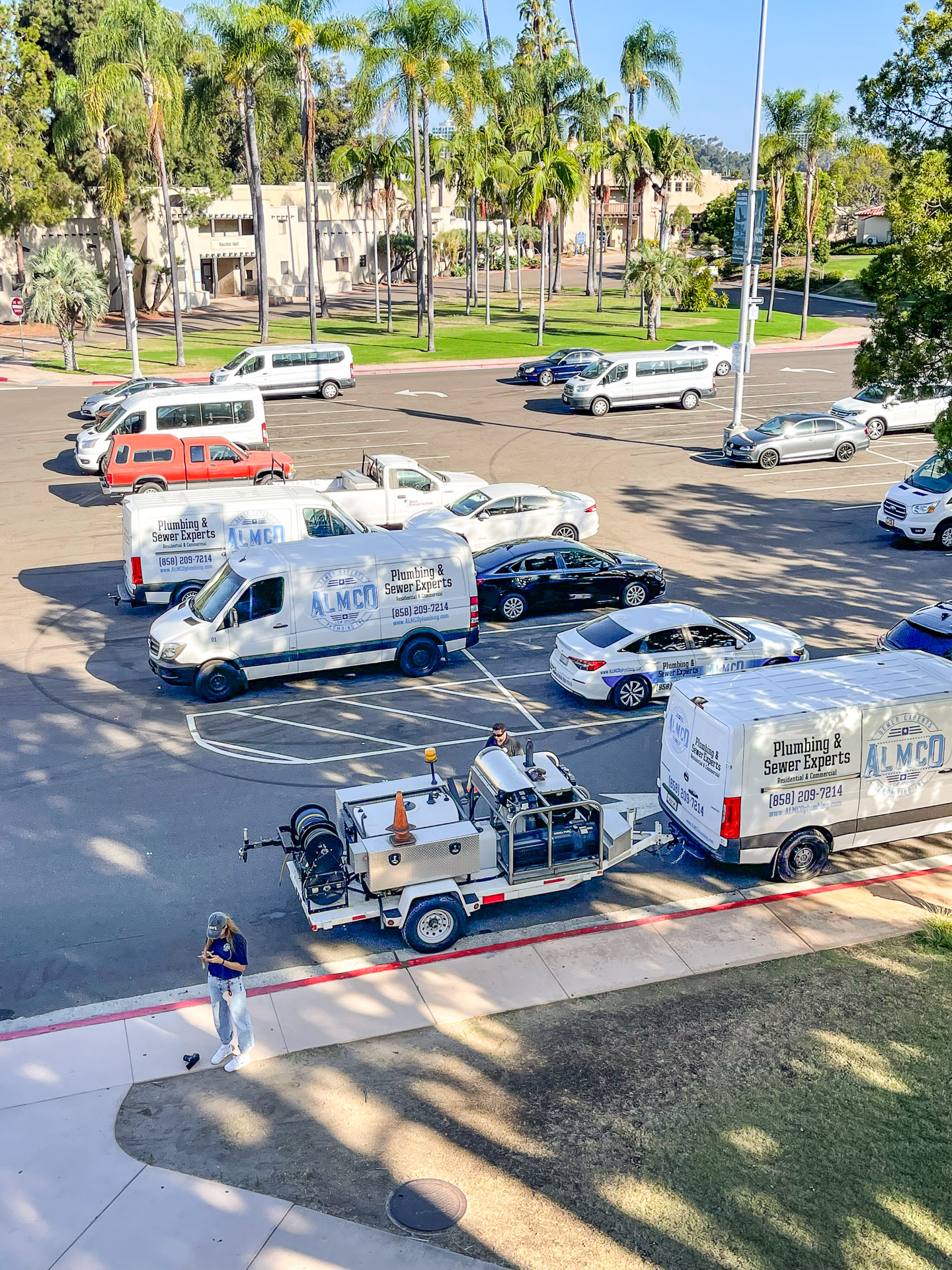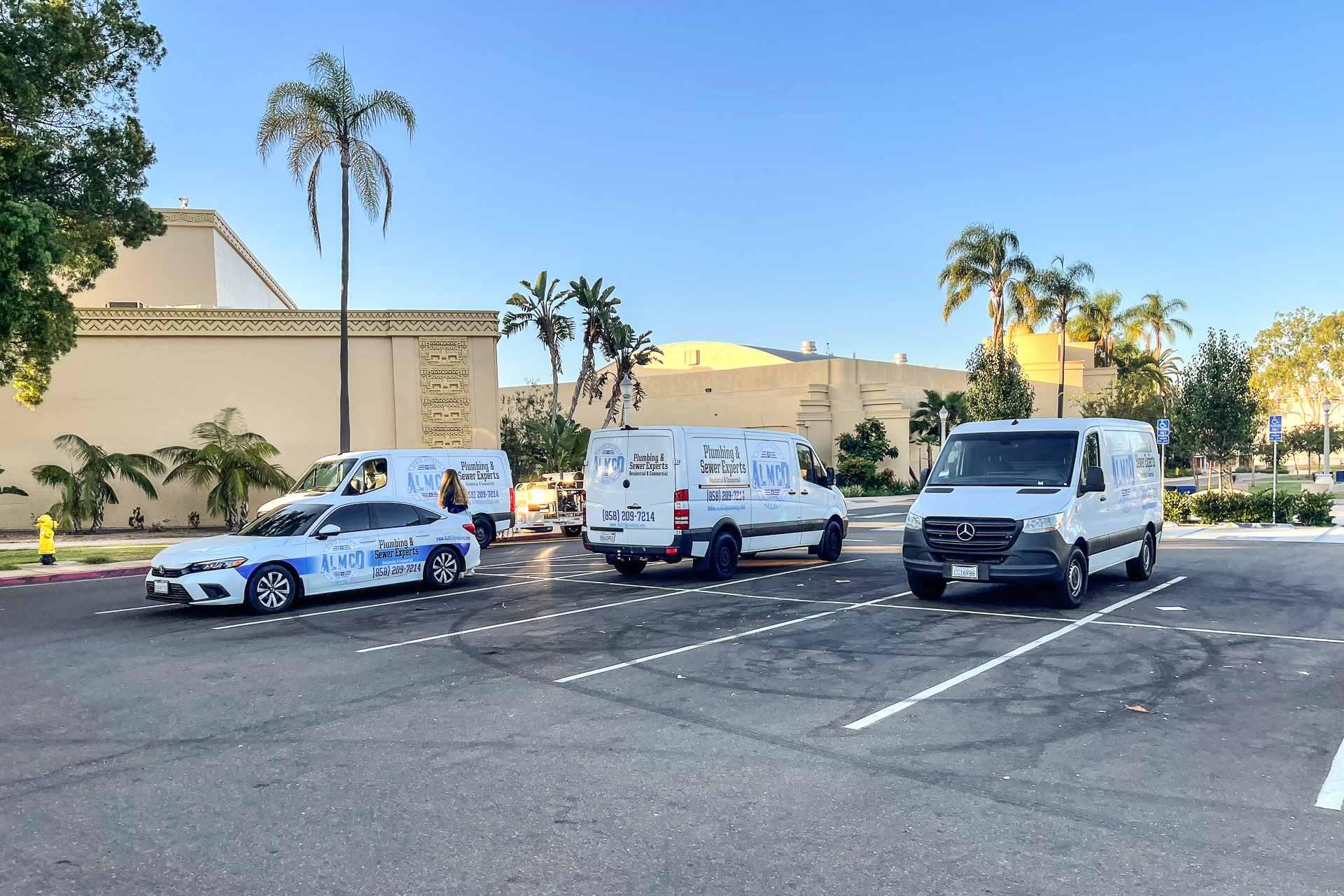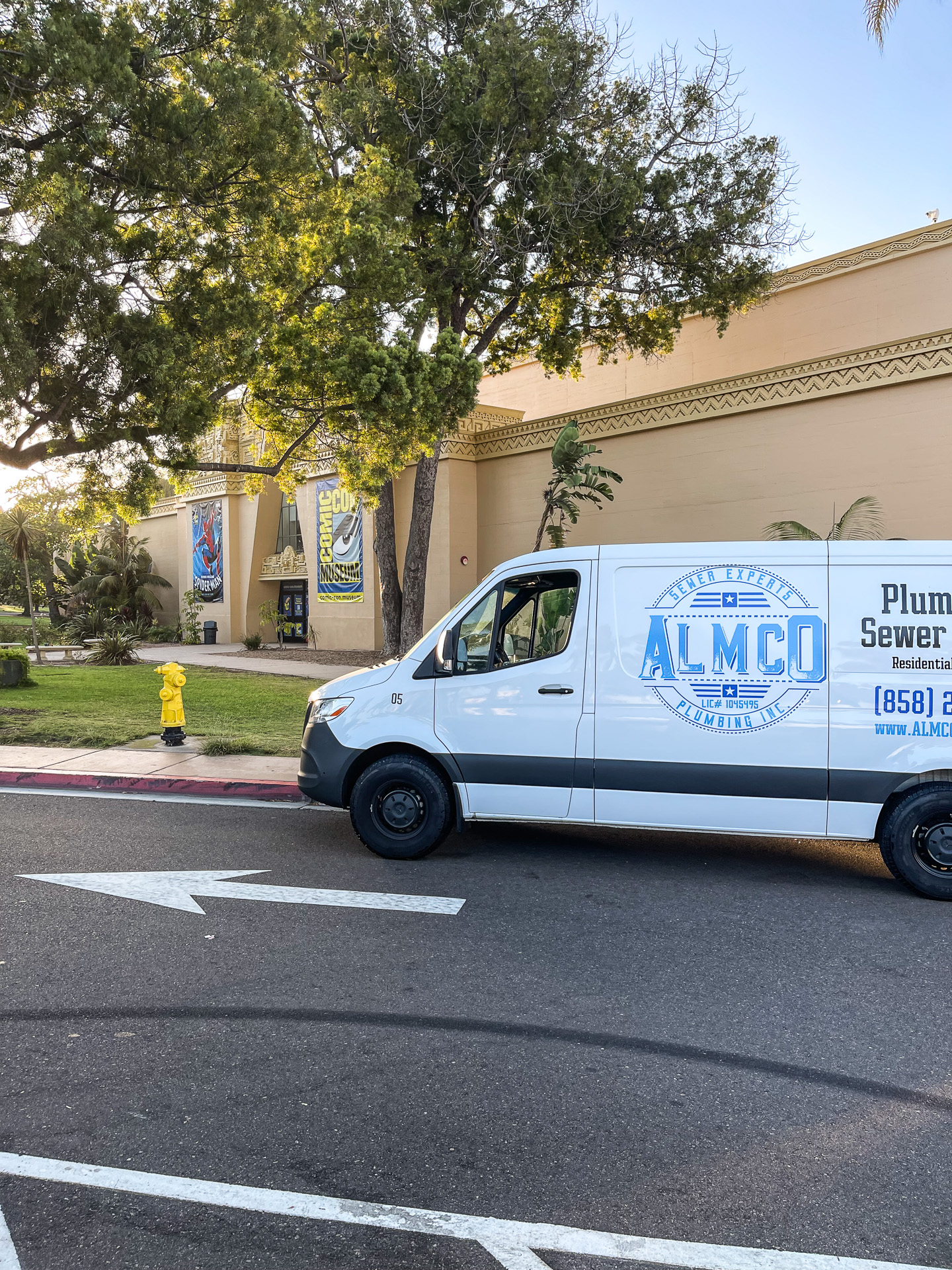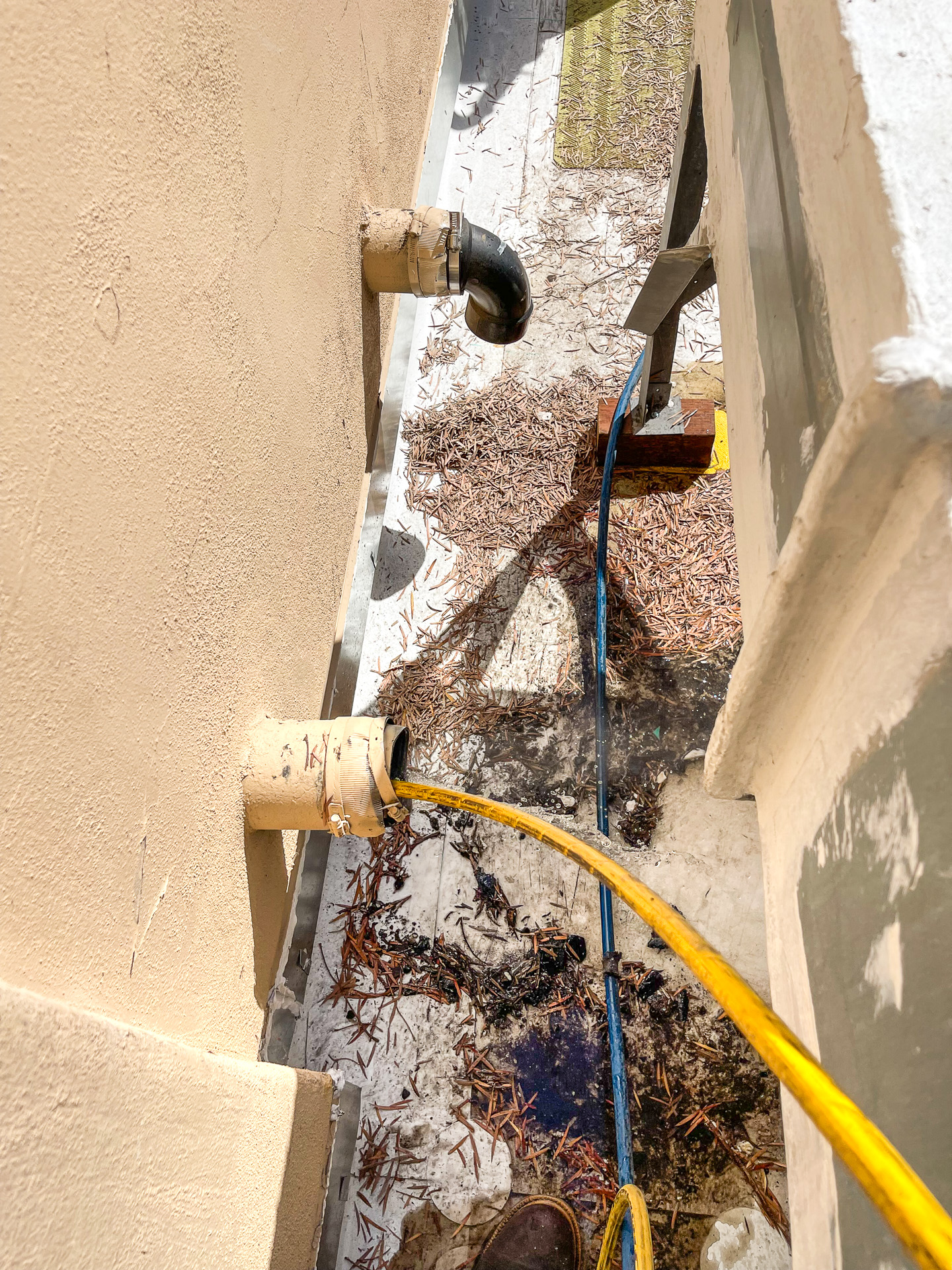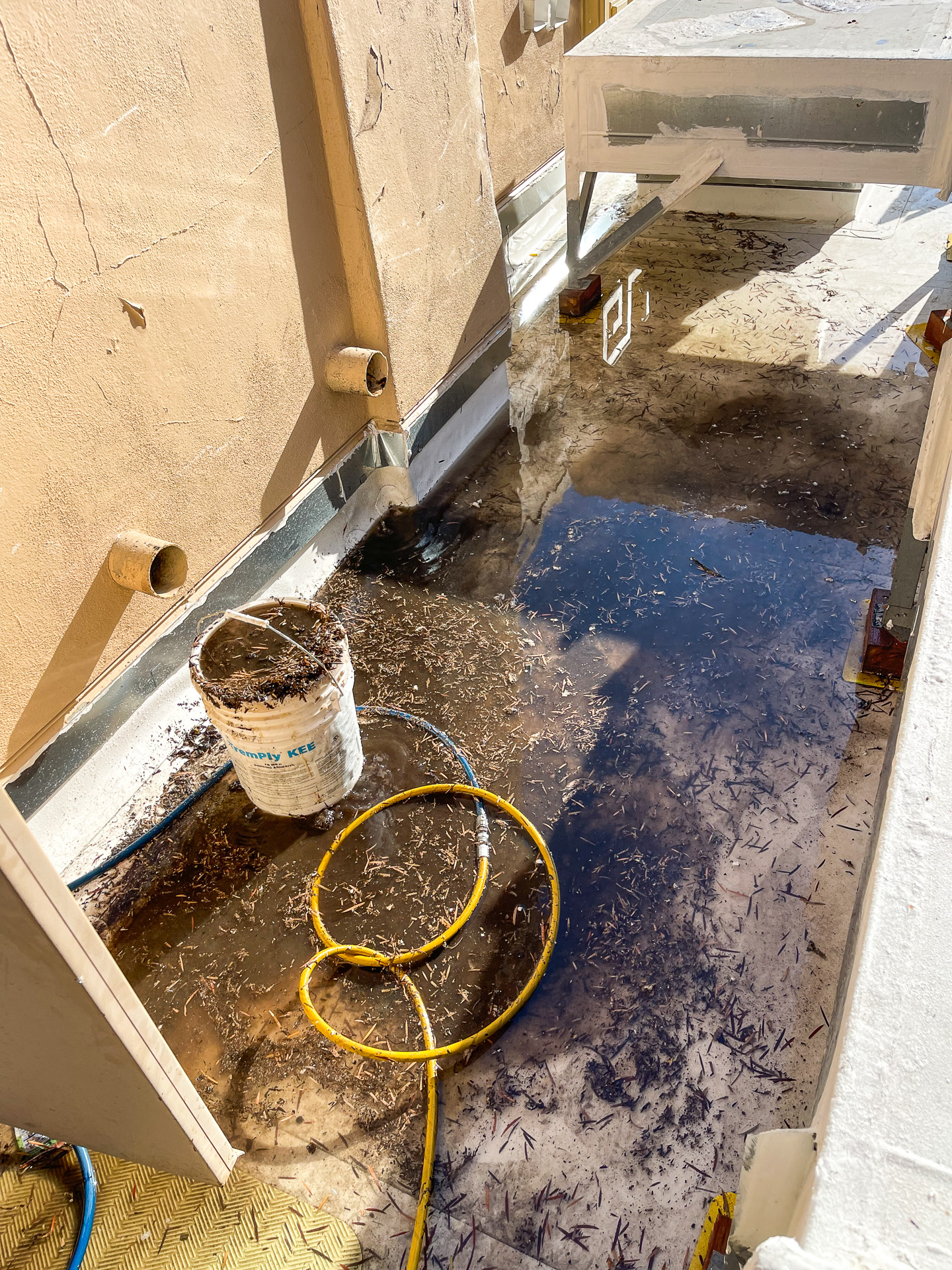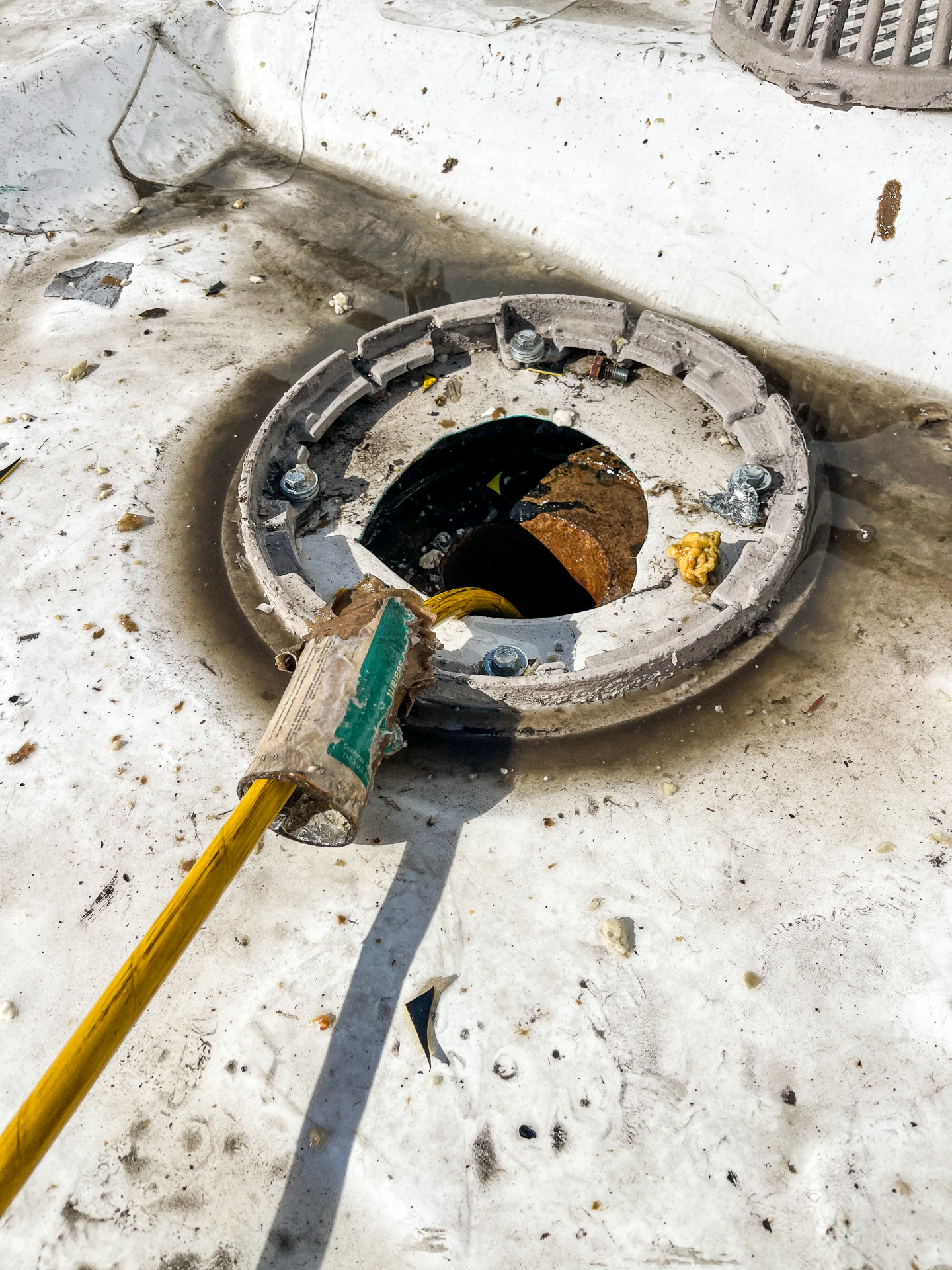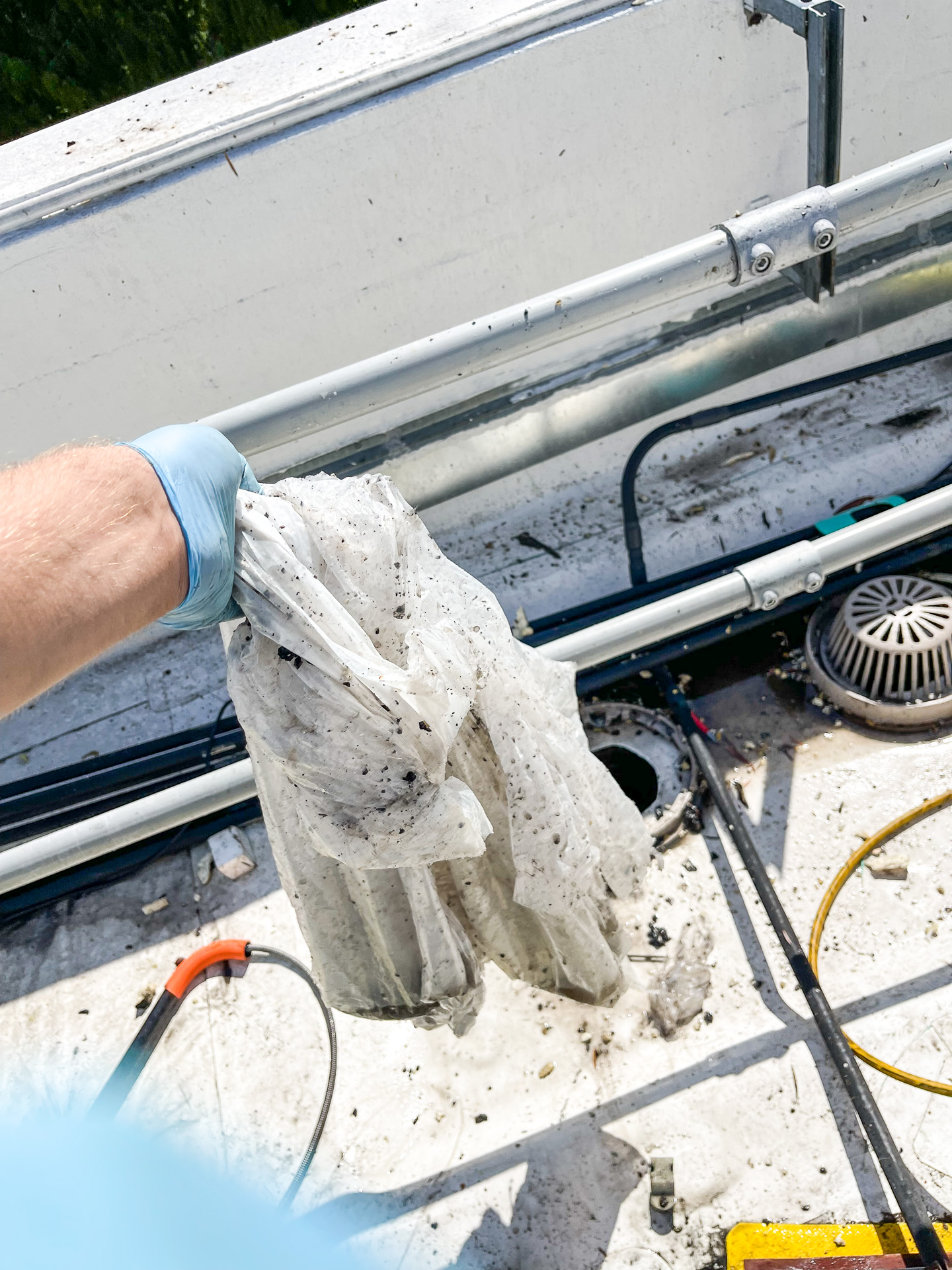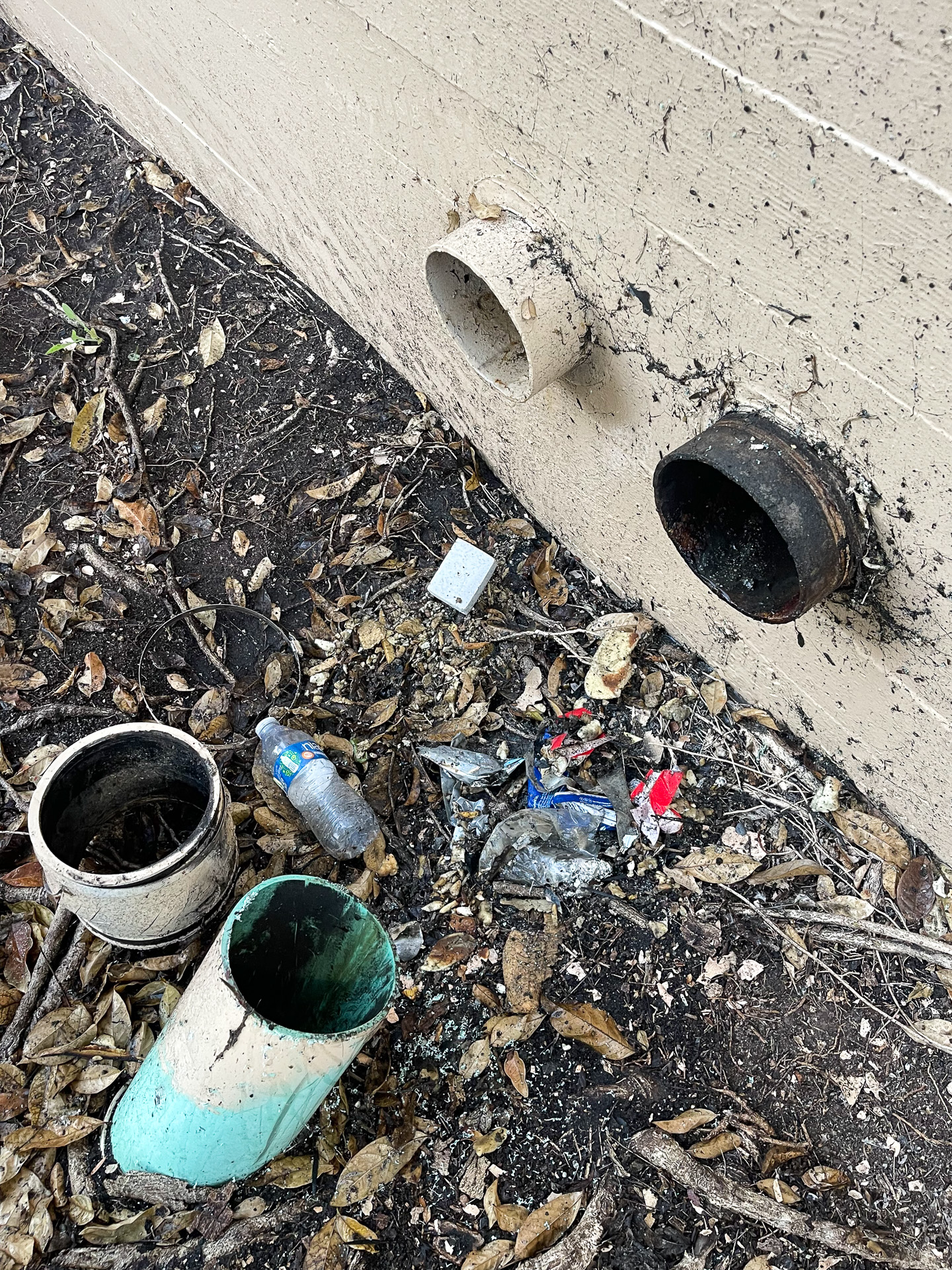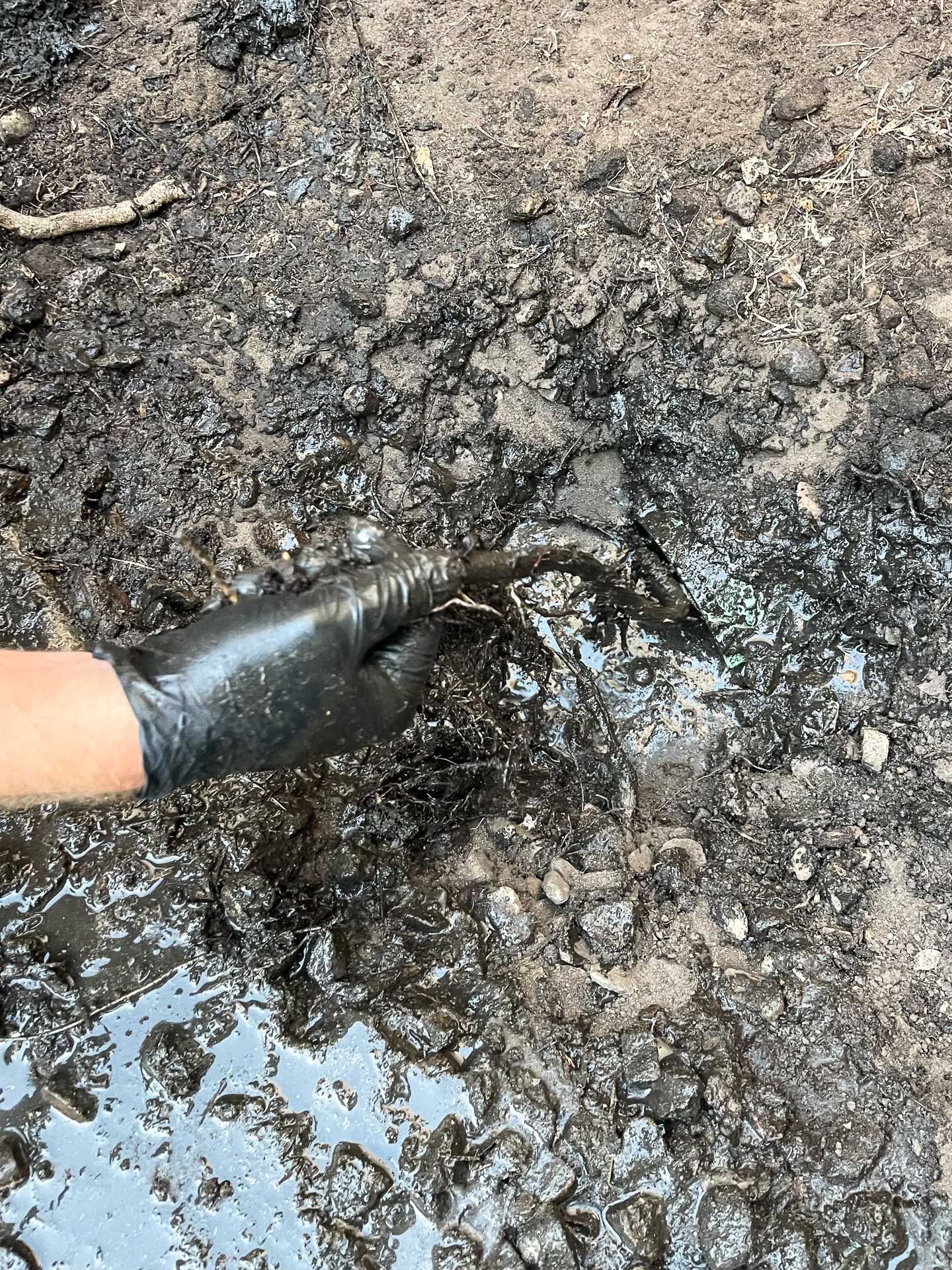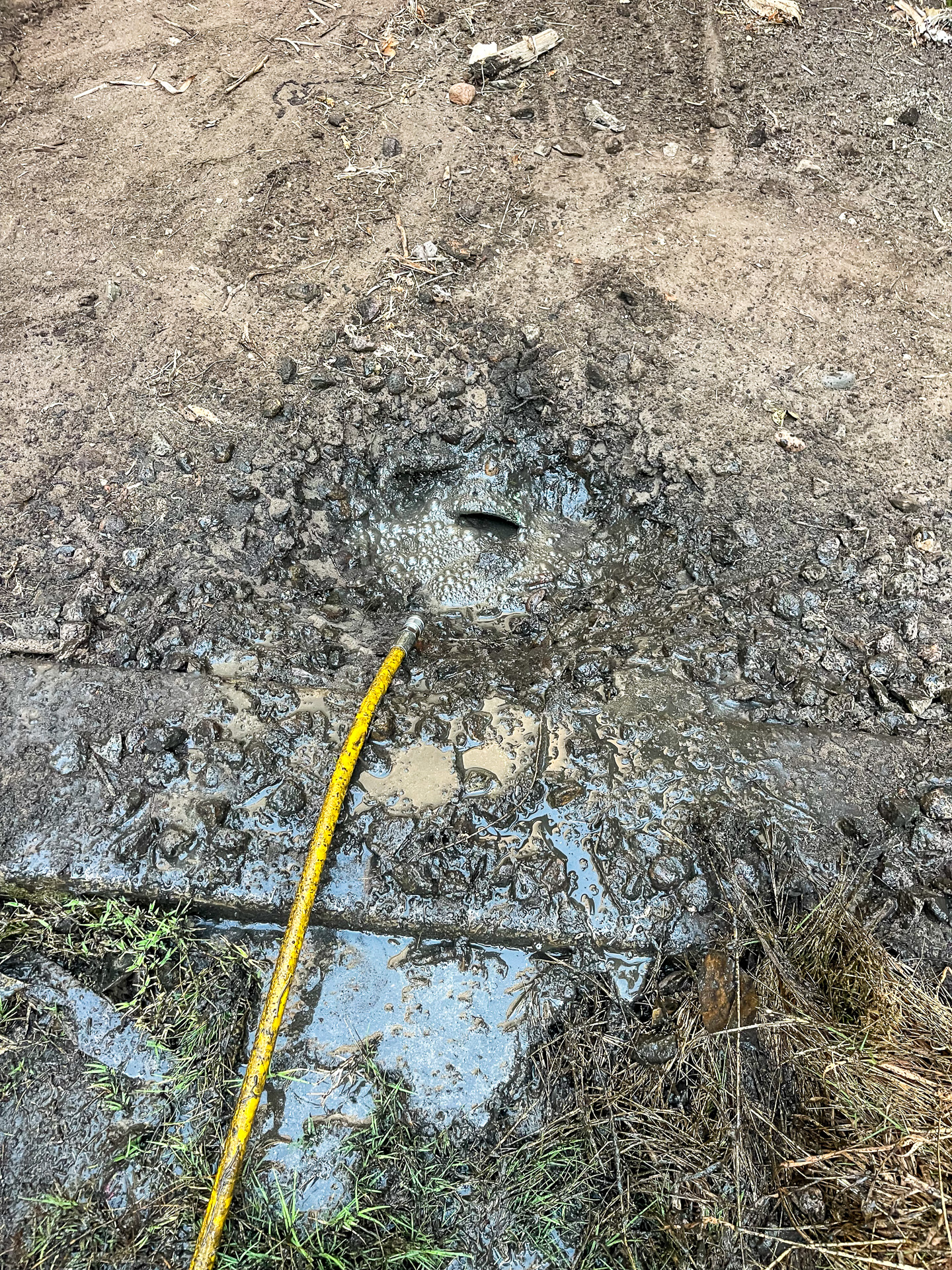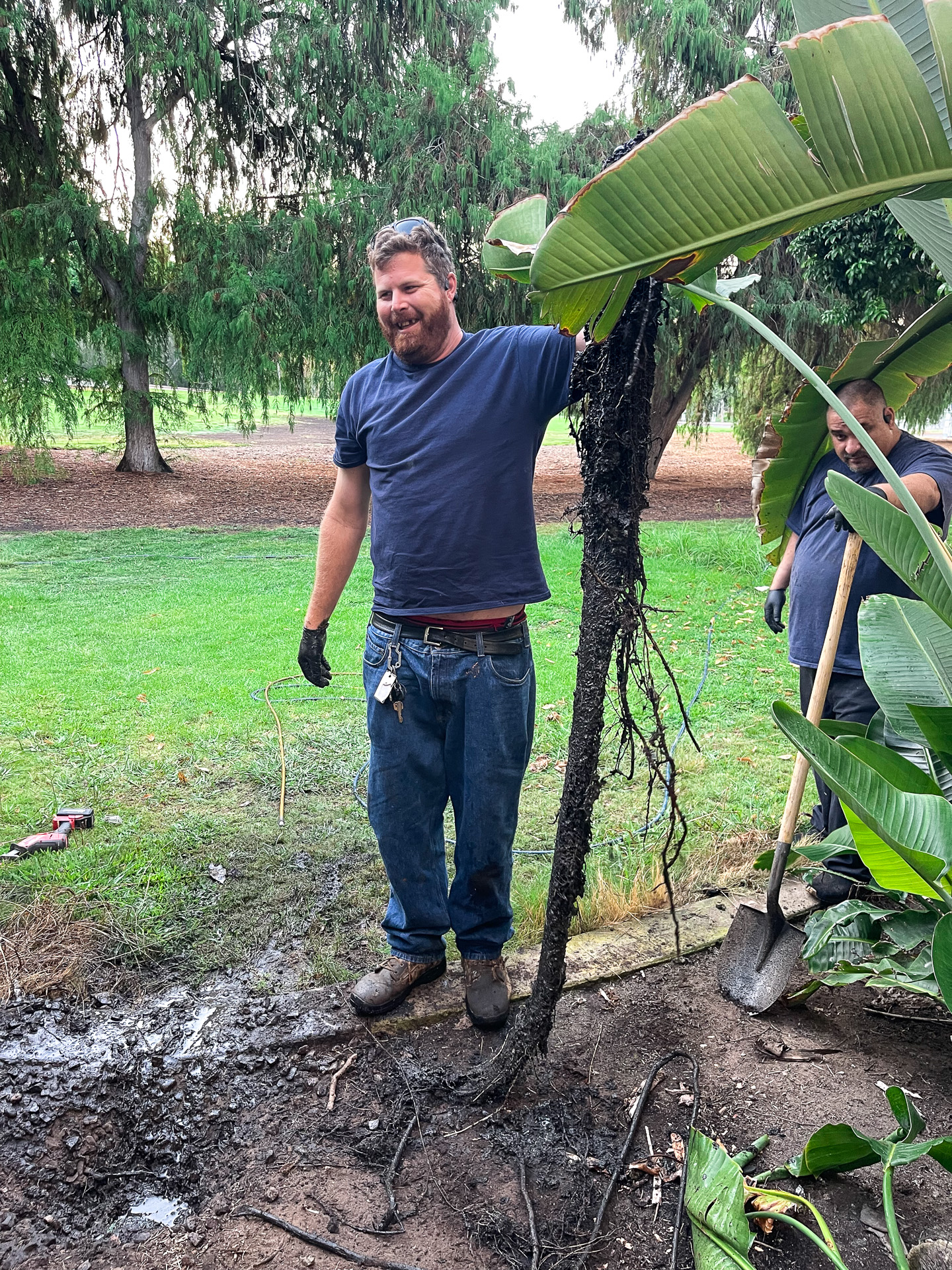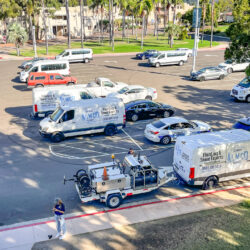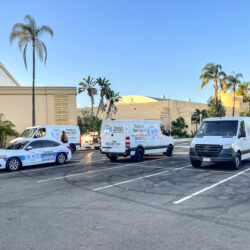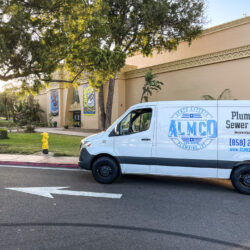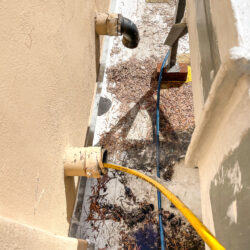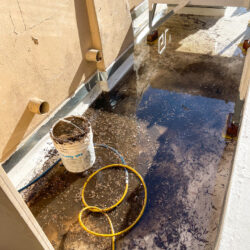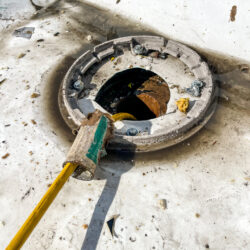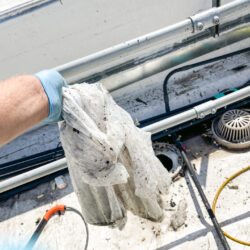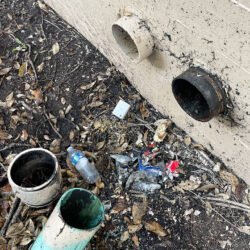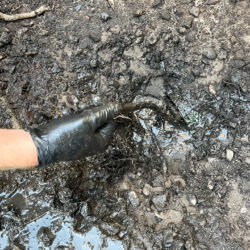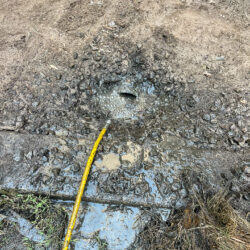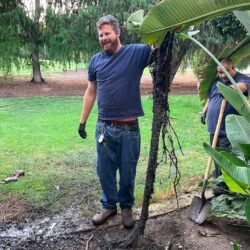How We Revived Storm Drainage System 80 Feet Above Ground Using Hydrojetting
The proper functioning of engineering systems in commercial buildings is critically important—especially in public spaces where hundreds or even thousands of people can gather at the same time. At the Comic-Con Museum in San Diego, the Almco Plumbing team was faced with a non-functional rooftop stormwater drainage system. As a result, rainwater would accumulate, creating the risk of damaging expensive equipment, causing electrical short circuits, and even triggering a fire.
This case study details the troubleshooting methods we used to restore the system and the preventive measures we implemented to ensure similar problems don’t occur in the future.
Contents
Technologies & Services
Client’s Problem: Non-Functional Rooftop Storm Drainage System at the Museum
The client reported that after the museum’s roof was restored by another contractor, the rooftop stormwater pipes stopped functioning, causing rainwater to pool on the roof.
This was a serious issue, as the roof housed critical infrastructure such as communication systems, HVAC units, and electrical distribution panels. Excess water could not only damage costly equipment but also cause short circuits—potentially leading to a fire.
Solution: Clearing the Building’s Stormwater System Using Hydrojetting
When the Almco Plumbing team arrived and inspected the roof, we discovered significant standing water. The storm drains were not passing water at all, indicating a complete blockage.
We opened all drain filters and began step-by-step cleaning of every rooftop storm drain. Using our Hydro Jett unit, we blasted the pipes with high-pressure water (5,000 psi, 17 gallons per minute).
The work was complicated by the building’s height—80 feet. Since the hydrojetting machine was on the ground, we had to hoist the hoses up to the roof and then feed them down the drains to fully clear the blockages.
For severe clogs, we use a metal distribution head with calibrated diffusers—specialized equipment that delivers excellent results. In this project, it helped us dislodge not only leaves and dirt but also large pieces of plastic sheeting and other debris.
After thoroughly cleaning all rooftop drains, our engineer inspected the work using a video endoscope. The upper sections of the pipes were completely clear.
Challenges in Cleaning the Ground-Level Drainage
The next stage was to clear the section connecting the building’s stormwater drainage system to the city’s main sewer line. We dismantled the transition plumbing elbows and found large amounts of plastic, foam, and other debris inside.
The clogs were worsened by the system’s design: 90° plumbing elbows, which tend to trap debris at the bend. In our projects, we use smaller-angled elbows—for example, two 45° elbows—which create the same turn but with less flow resistance, reducing the risk of blockages.
We then proceeded to clean the underground main line, where debris, sediment, and plant roots had also accumulated, obstructing the flow of rainwater.
In some locations, we had to dig to extract massive, tangled root clusters from inside the pipes. Thanks to our Hydro Jett high-pressure water system, we successfully cleared the entire stormwater drainage network serving the museum.
After thoroughly flushing all sections of the rooftop drains, we installed protective drain screens at every rooftop pipe outlet. These will help prevent debris from entering the system and causing future blockages.
Conclusions & Recommendations
The blockage of the rooftop stormwater pipes at the Comic-Con Museum in San Diego was caused by non-compliance with construction standards during previous roof work. This resulted in debris accumulation inside the pipes and created a serious risk of equipment damage, electrical short circuits, and even fire.
In addition, a thorough inspection of all drainage system components—including the underground mains—was carried out, allowing us to remove all blockages and prevent future malfunctions. This case clearly demonstrates the importance of proper installation and maintenance of stormwater drainage systems, including the use of protective drain screens, which significantly improve the system’s lifespan and performance.
Recommendations
- Schedule regular maintenance and inspections of drainage systems, especially after construction or renovation work.
- Use specialized equipment such as the Hydro Jett high-pressure system and inspection cameras to effectively eliminate blockages and verify work quality.
- Avoid the use of 90-degree elbows in drainage systems, as they promote blockages. Instead, use smaller-angle fittings (e.g., two 45-degree elbows) to reduce flow resistance and prevent clogs.
